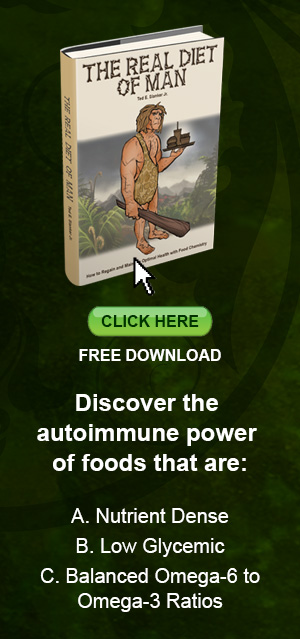Plants vs. Plant Eaters
Column #214
Is the conforming power of political correctness scaring millions of people out of the chronic disease frying pan into the fire?
For some years now there’s been a mania for veganism sweeping across many advanced societies. It’s a gripping obsession based on misguided beliefs in personal and global health that animal food products must be shunned in favor of plant-based foods. Some sources are reporting geometric growth in the percentage of vegans in the general population the past few years. Estimates now are that one in 12 Americans is vegetarian! The immediate and almost universal acceptance of imitation meat (made with highly processed meatless ingredients) underscores the power of the trend.1-3
Even the vast majority of consumers who are not vegetarians accept the mantra that plants are nutritionally better than meat. But none of them ask what the plants have to say about it even though plants were around hundreds of millions of years before mankind. Are plants totally defenseless pawns?
The scientific literature behind the origin of herbivores always includes the history of the war that’s been waged between plants and herbivores. That’s why I think any mention of plant defenses should raise a red flag for the possibility that vegetarianism will accelerate sickness, lost wages, deaths, and healthcare costs? It’s possible because plants are always on offense and many people, because of autoimmune issues, are often defenseless when dealing with the many offensive tactics.
Simple plant life in the sea dates back more than one billion years. The first land plants appeared around 470 million years ago. Less than 20 million years later plants were being consumed by arthropods (insects, arachnids, myriapods, and crustaceans) which were likely the first herbivores. By 400 million years ago plants had developed more complex organs such as roots and seeds. Because oxygen levels were low, land-based herbivores were slow in developing. It wasn’t until 300 million years ago that four-legged animals appeared and ate plants. Fast forward another 50 million years and the age of Dinosaurs arrived. Many were herbivores and some of them eventually became gigantic. The largest dinosaur, a herbivore, may have weighed 200,000 pounds.4 6
Dinosaurs ruled the world until 65 millions years ago when suddenly they disappeared. That ushered in the age of mammals. Mammals actually appeared on earth 135 million years earlier but they were tiny and did not actually come into their own until the dinosaurs vanished. Then they flourished and today the largest mammal is the blue whale which can top the scales at 400,000 pounds. Blue whales eat krill which is near the bottom of the food chain. The krill feeds mainly on phytoplankton (microalgae).
The first ruminates entered the picture 60 million years ago with a very unique microorganism digestion system for breaking down plant material. Interestingly, grasses evolved 20 million years later and it took another 20 million years before all of today’s modern ruminate families were established. These ruminates evolved on a diet of stems, leaves, lichens, forbs, and grasses. Very early humans appeared about four million years ago and Homo erectus appeared in Africa 1.8 million years ago. He was primarily a carnivore and had a very restricted plant-based diet because plants had already advanced their defenses significantly during the hundreds of millions of years proceeding his arrival.7 8
As plants and animals developed, some animals became more specialized in eating plants by evolving mechanisms to protect themselves from the diverse arsenal of plant defenses. The animals that specialized in eating animals did not develop the same protecting mechanisms. The herbivores consumed plants for their nutrients and the carbohydrates they photosynthetically produced. Carnivores in turn consumed herbivores for their storehouses of energy and nutrients. Omnivores obtained their nutrients and energy from either plants or animals.5
Because plants obtain energy from sunlight and can absorb minerals from around them they are standalone sustainable life forms. Animals are not sustainable life forms. Since herbivores survive solely on tough and fibrous plant matter, they are termed the primary consumers in the animal kingdom’s food cycle (chain). Think of it this way: herbivores are somewhat like krill in the ocean near the bottom of the food chain depending 100% on plants for their energy and nutrients. In turn, for energy and nutrients, carnivores eat herbivores just like some whales eat krill.
About 150 million years ago plants dramatically ramped up their defenses against herbivores in order to improve survival and reproduction. Physically they can grow in locations not easily found or accessed by herbivores, or change seasonal growth patterns. They can divert herbivores toward eating nonessential parts. Some may encourage the presence of natural enemies of herbivores, which protect the plant. They use bark, spines, sap, oils, and resins for protection. Plants are even sensitive to being touched.
Many plants produce secondary metabolites (chemicals unnecessary for metabolism) that can impact the survival of herbivores. There may be as many as 200,000 of these chemical defenses which can act as repellents or toxins, or reduce plant digestibility. Generally, while most plant defenses are for insects, other defenses are aimed at vertebrate herbivores, such as birds and mammals. Interestingly, some of the defenses against herbivory are actually beneficial for humans. So it’s rather complex.9 22
Plants also protect their “offspring” which are seeds. Some seeds are exposed and can be viewed as seed heads on stalks. These seeds are usually protected with metabolites, which for humans some are good and some are harmful. Other seeds are covered with a hull or fruit. These covered seeds are intended for animals to eat and then the pits or seeds are eliminated in the feces some distance from the mother plant. Even these covered seeds are protected chemically and are rarely safe to eat. Peach seeds come to mind.10
Of course some metabolites are very poisonous for humans. There are some that humans can tolerate while they make other animals sick. For instance the theobromine in chocolate can sicken dogs. The following table is a list of some of the metabolites that biologists are concerned about in edible plants that can negatively impact humans.11 12




